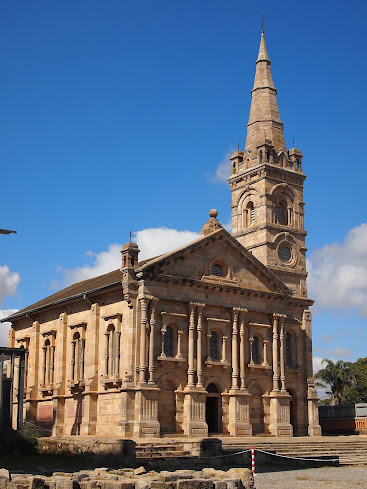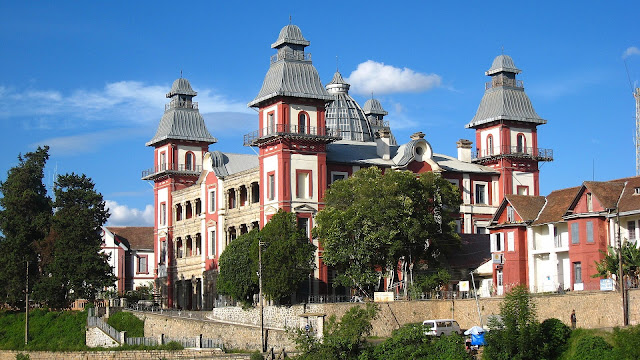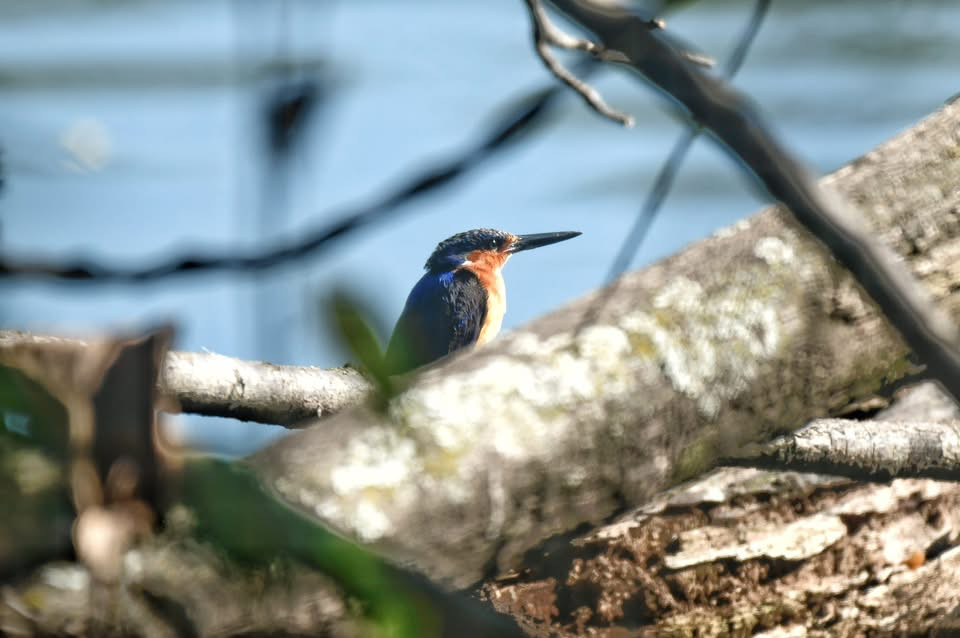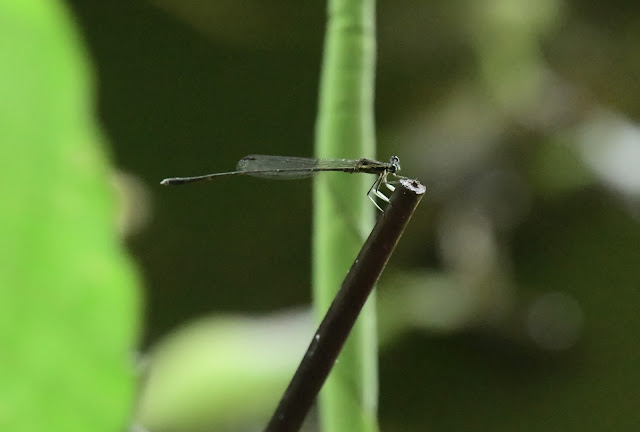DAY9 Madagascar
Road trip🇲🇬
 |
| Knop-billed duck |
18/05/2025
Antananarivo - International flight
Trip plan: You will have the possibility to visit the capital in the morning : visit of Tsarasaotra birding park - Transfer to the airport and fly back to your country [Departure time at 02 :50 PM] - Say goodbye at the airport.
Antananarivo
Antananarivo is the capital city of Madagascar, in the island’s Central Highlands. Overlooking the city, the Rova of Antananarivo palace complex was the center of the Merina kingdom from the 17th century. It features wooden houses and royal tombs. The pink baroque Andafiavaratra Palace sits in the nearby Haute Ville neighborhood. In the city center, heart-shaped Lake Anosy is ringed by jacaranda trees.
 |
Royal chapel
|
Antananarivo was originally the site of a town called
Analamanga, meaning "Blue Forest" in the
Central Highlands dialect of the
Malagasy language. Analamanga was established by a community of
Vazimba, the island's first occupants.
Merina King
Andrianjaka, who migrated to the region from the southeast coast, seized the location as the site of his capital city. According to oral history, he deployed a garrison of 1,000 soldiers to successfully capture and guard the site.The hill and its city retained the name Analamanga until the reign of King
Andriamasinavalona, who renamed it Antananarivo ("City of the Thousand") in honor of Andrianjaka's soldiers.
Major historic landmarks and attractions in the city include the reconstructed royal palaces and the Andafiavaratra Palace, the tomb of Rainiharo, Tsimbazaza Zoo, Mahamasina Stadium, Lake Anosy, four 19th-century martyr churches, and the Museum of Art and Archaeology.
 |
The colonial French Residency serves today as a presidential office and has been renamed the Ambohitsorohitra Palace.
Radama's successor Ranavalona I invited a shipwrecked craftsman named Jean Laborde to construct the tomb of Prime Minister Rainiharo, and Manjakamiadana (built 1839–1841), the largest palace at the Rova. Laborde also produced a wide range of industrial products at factories in the highland village Mantasoa and a foundry in the Antananarivo neighborhood of Isoraka.Ranavalona oversaw improvements to the city's infrastructure,

|
including the construction of the city's two largest staircases at Antaninarenina and Ambondrona, which connect la ville moyenne ("the middle town") to the central marketplace at Analakely. In 1867, following a series of fires in the capital, Queen Ranavalona II issued a royal decree that permitted the use of stone and brick construction in buildings other than tombs.LMS missionaries' first brick house was built in 1869; it bore a blend of English, Creole, and Malagasy design and served as a model for a new style of house that rapidly spread throughout the capital and across the highlands. Termed the trano gasy("Malagasy house"), it is typically a two-story, brick building with four columns on the front that support a wooden veranda. In the latter third of the 19th century, these houses quickly replaced most of the traditional wooden houses of the city's aristocratic class.The growing number of Christians in Imerina prompted the construction of stone churches throughout the highlands, as well as four memorial churches on key sites of martyrdom among early Malagasy Christians under the reign of Ranavalona I. |



 |
Tsarasaotra Park is a private park open to the public, located north of the city of Antananarivo, Madagascar. It is also called "Bird Park". Wetland with remarkable biodiversity, this is the first private Ramsar site on the island
Tsarasaotra Park is the ideal starting point for your birdwatching trip to Madagascar.
|
On our birdwatching trips, we had to visit Tsarasaotra. Although this park is not renowned for birdwatching, it is a wonderful place to explore, especially given its location not far from the town centre.
Imagine a charming lake surrounded by eucalyptus, camphor, rushes and papyrus, with a small green island in the middle. It’s not just a body of water – it’s a haven for a variety of birds, especially herons and ducks.
During the hunting season, Tsarasaotra is crucial to the survival of 14 species and subspecies of waterbirds endemic to Madagascar.
On Madagascar’s high plateaux, this is the only place where you can find the endangered Madagascar Pond Heron and other vulnerable species such as the Meller’s Duck. And that’s not all! In addition to its ecological wealth, the park contains historical remains that add to its appeal.
Unfortunately, Lake Tsarasaotra is facing a number of environmental challenges, including eutrophication and erosion.
Night heron
White-faced whistling duck
The white-faced whistling duck has a long grey bill, a long head, and longish legs. It has a black neck and head, and a distinctive white face that gives it its name, though the amount of white color visible has regional variations among the species. For example, the white-faced whistling ducks with more black coloration are commonly found in western Africa where rainfall supersedes the dry season. The back and wings are dark brown to black, and the underparts are black with a fine white barring on the flanks. The neck is chestnut. Males and females have similar plumage. Juveniles are similar in color to adults but have a much less contrasted head pattern.
Red-billed teal
The red-billed teal or red-billed duck (Anas erythrorhyncha) is a dabbling duckwhich is an abundant resident breeder in southern and eastern Africa typically south of 10° S. This duck is not migratory, but will fly great distances to find suitable waters. It is highly gregarious outside the breeding season and forms large flocks.
Fulvous whistling duck

The fulvous whistling duck or fulvous tree duck (Dendrocygna bicolor) is a species of whistling duck that breeds across the world's tropical regions in much of Mexico and South America, the West Indies, the southern United States, sub-Saharan Africa and the Indian subcontinent. It has plumage that is mainly reddish brown, long legs and a long grey bill, and shows a distinctive white band across its black tail in flight. Like other members of its ancient lineage, it has a whistling call which is given in flight or on the ground. Its preferred habitat consists of wetlands with plentiful vegetation, including shallow lakes and paddy fields. The nest, built from plant material and unlined, is placed among dense vegetation or in a tree hole. The typical clutch is around ten whitish eggs. The breeding adults, which pair for life, take turns to incubate, and the eggs hatch in 24–29 days. The downy grey ducklings leave the nest within a day or so of hatching, but the parents continue to protect them until they fledgearound nine weeks later.
Knob-billed duck
White-faced whistling duck
The white-faced whistling duck (Dendrocygna viduata) is a whistling duck that breeds in sub-Saharan Africa and much of South America. This species is gregarious, and at favoured sites, the flocks of a thousand or more birds arriving at dawn are an impressive sight. As the name implies, these are noisy birds with a clear three-note whistling call.
Meller's duck
Malagasy kingfisher
Black heron
The black heron (Egretta ardesiaca), also known as the black egret, is an African heron. It uses its wings to form a canopy when fishing. Madagascar is a paradise for both butterflies and dragonflies, with a high diversity of species, many of which are endemic to the island. Madagascar is home to over 3,000 butterfly species, including the unique Madagascar Diadem (Hypolimnas dexithea) and the Rainbow Butterfly (Chrysiridia rhipheus). For dragonflies and damselflies, there are over 190 species in Madagascar, with about 180 of them being endemic, according to a book on the subject.
 |
A male Dark Blue Pansy (Junonia oenone) |
 |
Malagasy Chocolate Pansy, Junonia goudotii |
Southern Banded Groundling, Brachythemis leucosticta (Burmeister, 1839)
Males of Pseudagrion punctum (Rambur, 1842)
 |
| The widespread Ochre Spreadwing, Lestes ochraceus Selys, 1862 |
A male Proplatycnemis malgassica (Schmidt, 1951).
 |
| Malagasy Giant chameleon |
Chameleon molting, also known as shedding, is a normal part of their lives as they grow and their skin renews. Young chameleons shed more frequently than adults, but all chameleons shed periodically. The process can involve the chameleon becoming dull, losing appetite, rubbing against cage décor, and potentially puffing out their eyes.
Black herons employ a unique hunting technique called "canopy feeding" where they use their wings to create shade, attracting fish. This method involves spreading their wings like an umbrella over the water, creating a dark patch that fish perceive as a safe hiding spot. Once fish gather beneath the "canopy," the heron strikes quickly, catching them with its sharp beak.
A Look Back at the Red List of Trees of Madagascar
Madagascar's history is a captivating mix of diverse influences, from its early settlers from Borneo and Indonesia to later interactions with European powers. The island's unique biodiversity, including its endemic tree species, faces significant conservation challenges. Recent efforts are focused on achieving the Sustainable Development Goals, recognizing the need for resilience in the face of climate change and other shocks.
Bye Bye till see you again
Back to the first page >> http://www.jungjahut.com/2025/05/9-day-road-trip-in-madagascar.html



















































ไม่มีความคิดเห็น:
แสดงความคิดเห็น